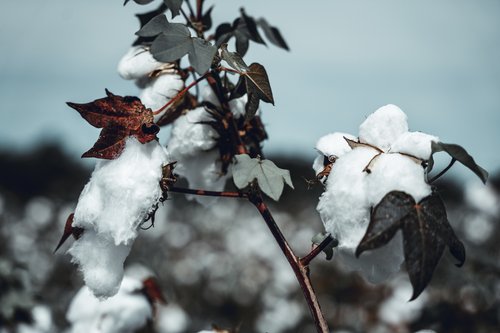
2 min read
Green Certifications: OEKO-TEX
WLLW examines Oeko-Tex Standard 100, a key certification that safeguards against toxic substances in textiles, responding to consumer demand for healthier products.

3 min read
Working with skilled craftspeople in Peru, Brazil and Nepal, Rosemary Hallgarten weaves their stories and time-honored crafts into textiles and rugs for contemporary homes.
Textile designer Rosemary Hallgarten is leaning over fluffy fabric swatches that are spread across a large table in her sunlit studio in Norwalk, Connecticut. Although her work is decidedly modern, she has always championed indigenous craft and artisanal communities in Peru, Brazil and Nepal. Today, her business is booming but it took her some time to get there.
Hailing from London, she left in her twenties and worked in advertising while making jewelry on the side. “I’ve always worked with my hands,” she says. This didn’t take off but rug-making did. Her mother, Gloria Finn, who lived and worked in Italy and set up a rug studio there in the late 1950s, still had her rug hooking needle, which she passed on to Rosemary. “I set myself the task of making six rugs,” she recalls. This led to a spot in a designer showcase in Pacific Heights in San Francisco and a commission for a much larger piece. “I had to find someone to make it because I was working full time and I had a small baby. So I trained three women to help.”
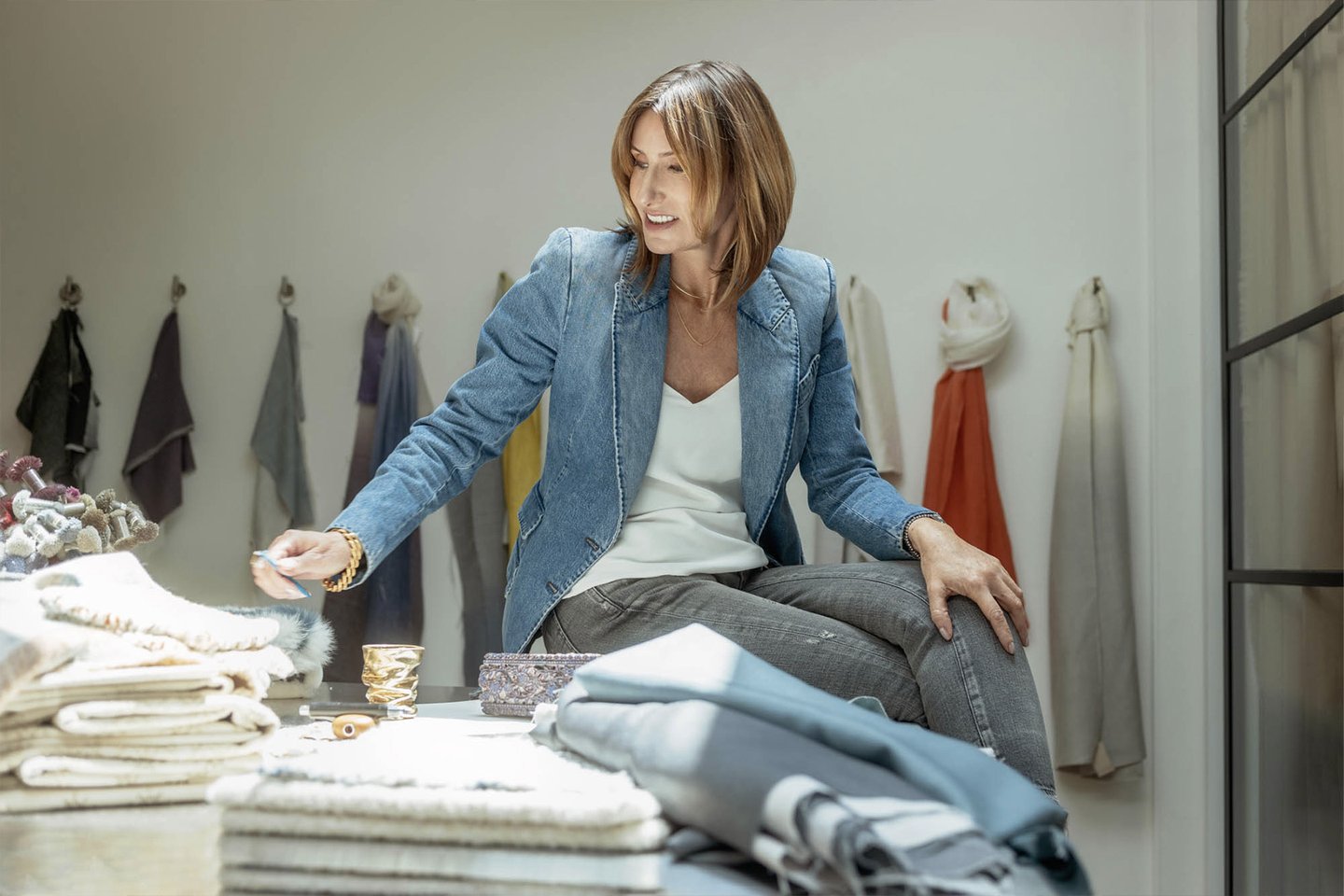
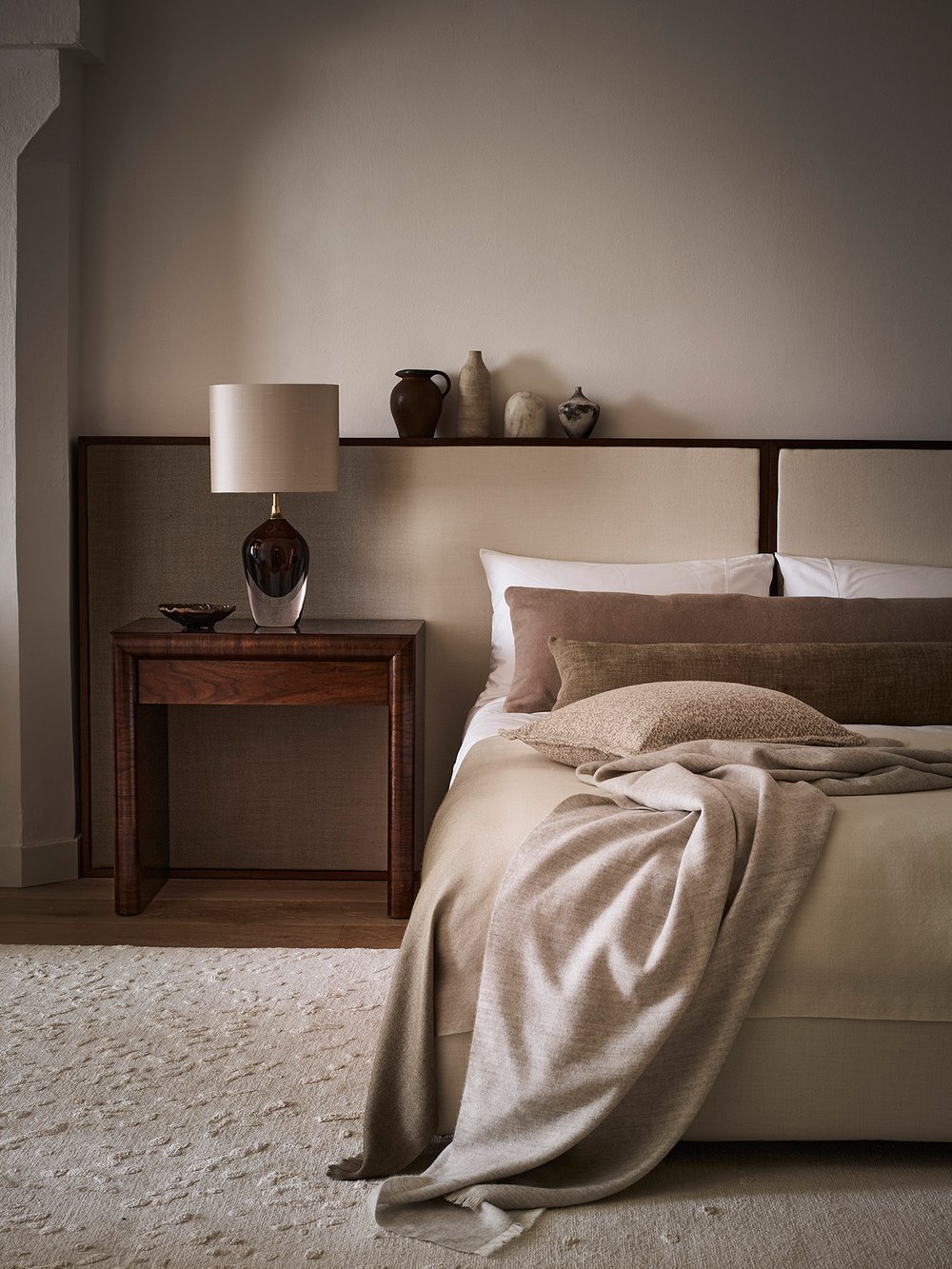
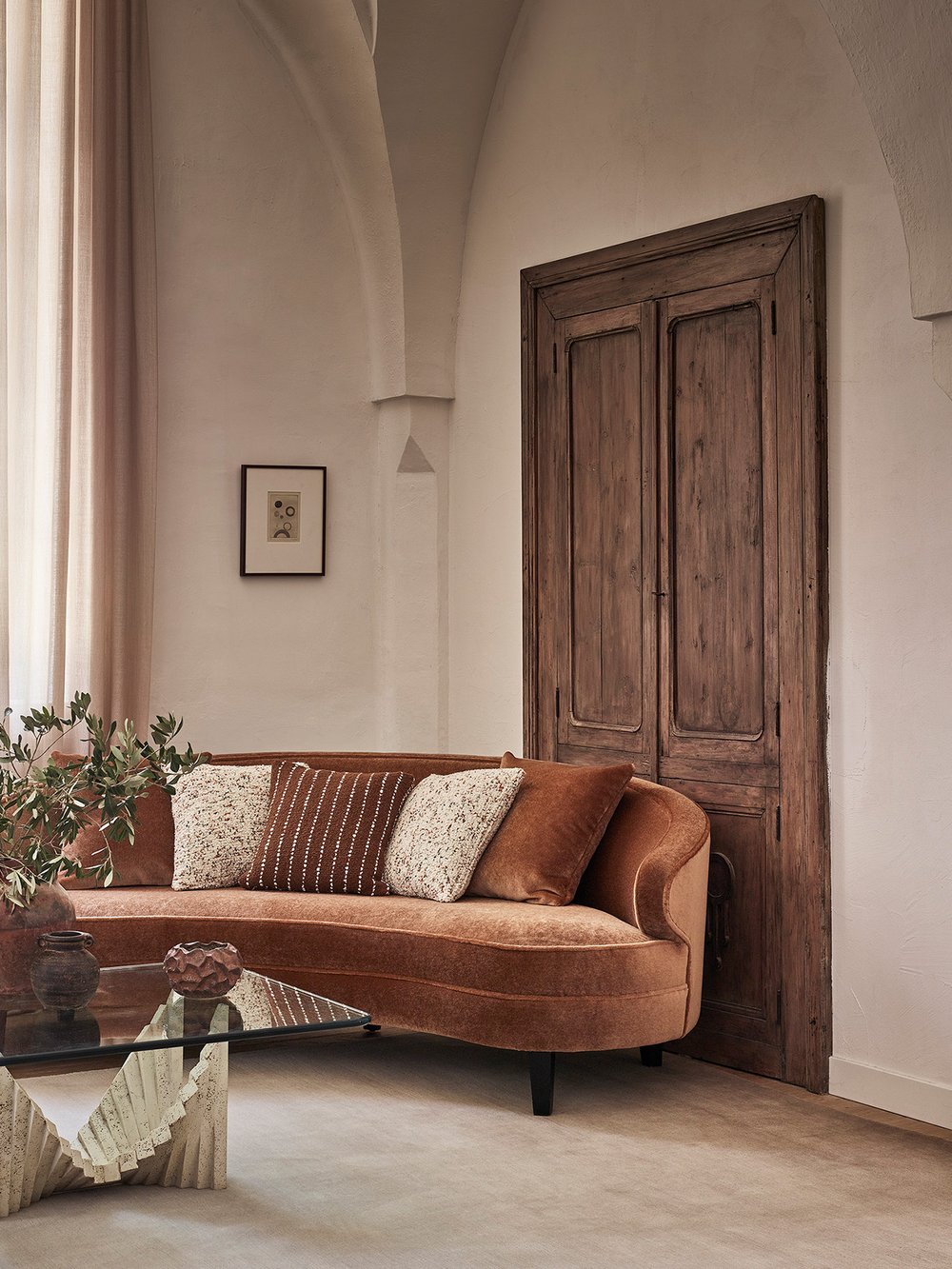
Hallgarten hasn’t looked back since. She now brings out two collections of luxurious rugs, fabrics and accessories a year, working primarily with craftspeople who do much of the dyeing, knotting, weaving and embroidery in their own homes. She works largely with alpaca wool from Peru but also integrates Tibetan wool, cactus, nettle and hemp, processed entirely by hand in the villages of Nepal, as well as silk and banana fiber from Brazil.
“I knew that there was so much skill and tradition in artisan craft in different countries and I wanted to harness that."
Rosemary Hallgarten
“I think because of my appreciation for craft growing up, I wanted to create products that came from artisans I had a personal connection with,” she explains. “I knew that there was so much skill and tradition in artisan craft in different countries and I wanted to harness that. In Peru all the people I met were making very traditional Inca-inspired designs, in the natural colors of alpaca; mainly browns and white. I became excited at the idea of working with these very skilled craftspeople to create modern designs and textures using dyed yarns to bring their story and ancient craft into contemporary homes. From this start I was naturally led to Nepal and then Brazil as well.”


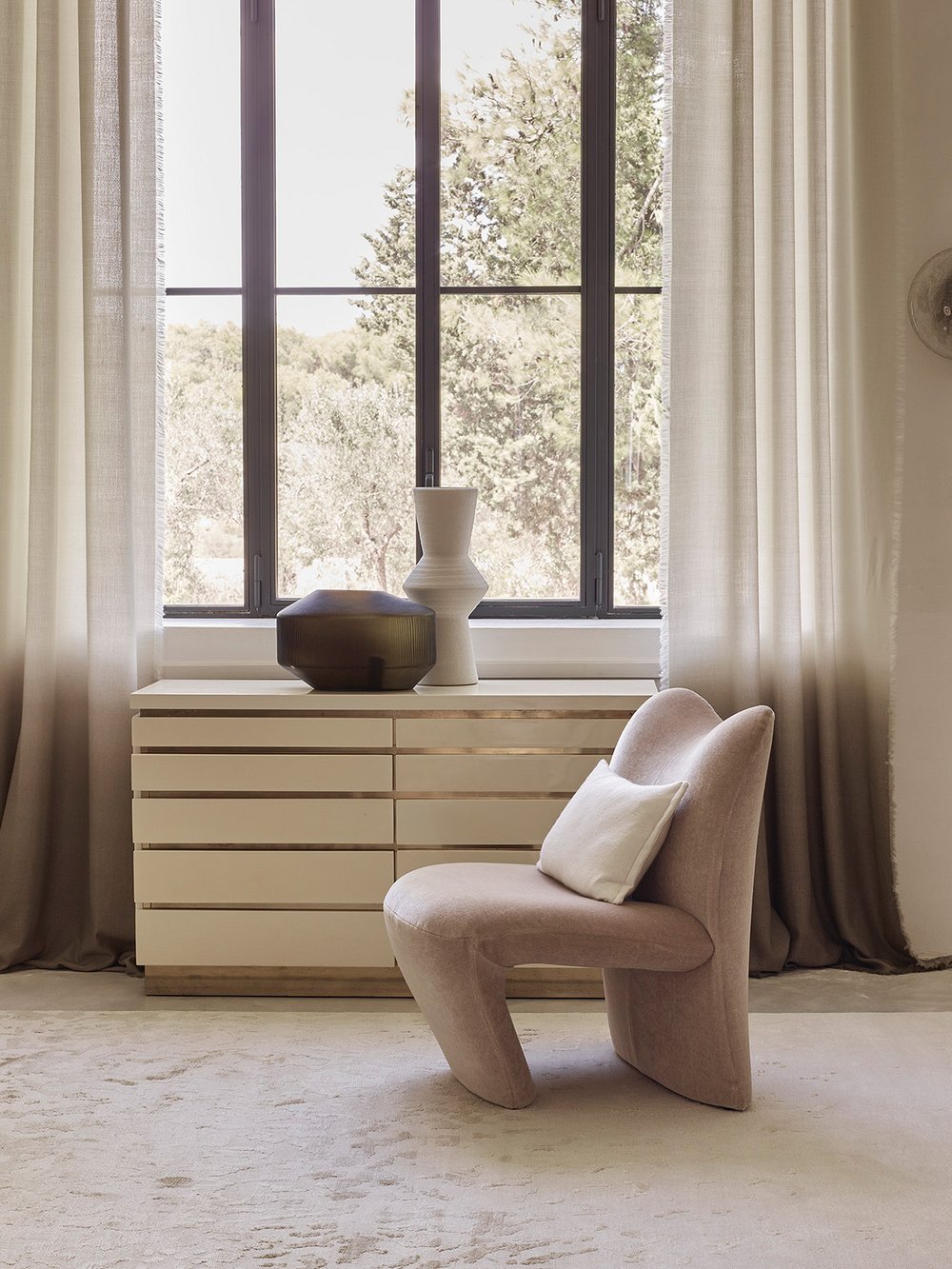
Hallgarten’s spring collections tend to be informed by brighter hues (her upcoming one takes its cue from the deep blues and whites of Portuguese tiles) and features lighter fabrics, such as linen sheers, while the autumn releases are all about rich, deep colors and tactility. Last fall’s Aurora collection, for instance, features plush fabrics and deep, ombre wool rugs. “Typically I like to do much more chunky, wintry things and that’s reflected both in the textures and the colors,” she explains. Aurora was all about cognac and chocolate hues.”
For Hallgarten, the provenance of her materials is key and she maintains close ties with the rug and fabric weavers she works with, respecting their traditional methods for rearing animals and gathering the wool. “Pretty much all of the yarn that I use in Peru comes straight from the highlands, and this supports the way of life of the alpaca farmers,” she says. Alpaca fibers make up 90 percent of Hallgarten’s products; the animals are some of the most sustainable on Earth as they have gentle grazing habits and fast-growing fleece. What’s more, the majority of Hallgarten's pieces are custom made by hand, so there is minimal waste and no need for machinery. “We then use traditional weaving and rug-making techniques, relying on loom traditions that have been passed down for generations. That was definitely very important to me when I started,” she says.
Hallgarten’s pieces carry the OEKO-TEX Standard 100, a global certification that verifies that there are no harmful substances in her textiles or any used during manufacturing. She also follows Peru’s fair-trade practice and all of her rugs from Nepal are GoodWeave-certified. Now with a flagship in NYC and featuring in multi-brand showrooms across the US and in Paris and London, Hallgarten continues to be instrumental in bringing indigenous craft to a broader audience, which has allowed the craftspeople she works with “to not only make a living, but to really keep those traditions and pass them on to new generations”.
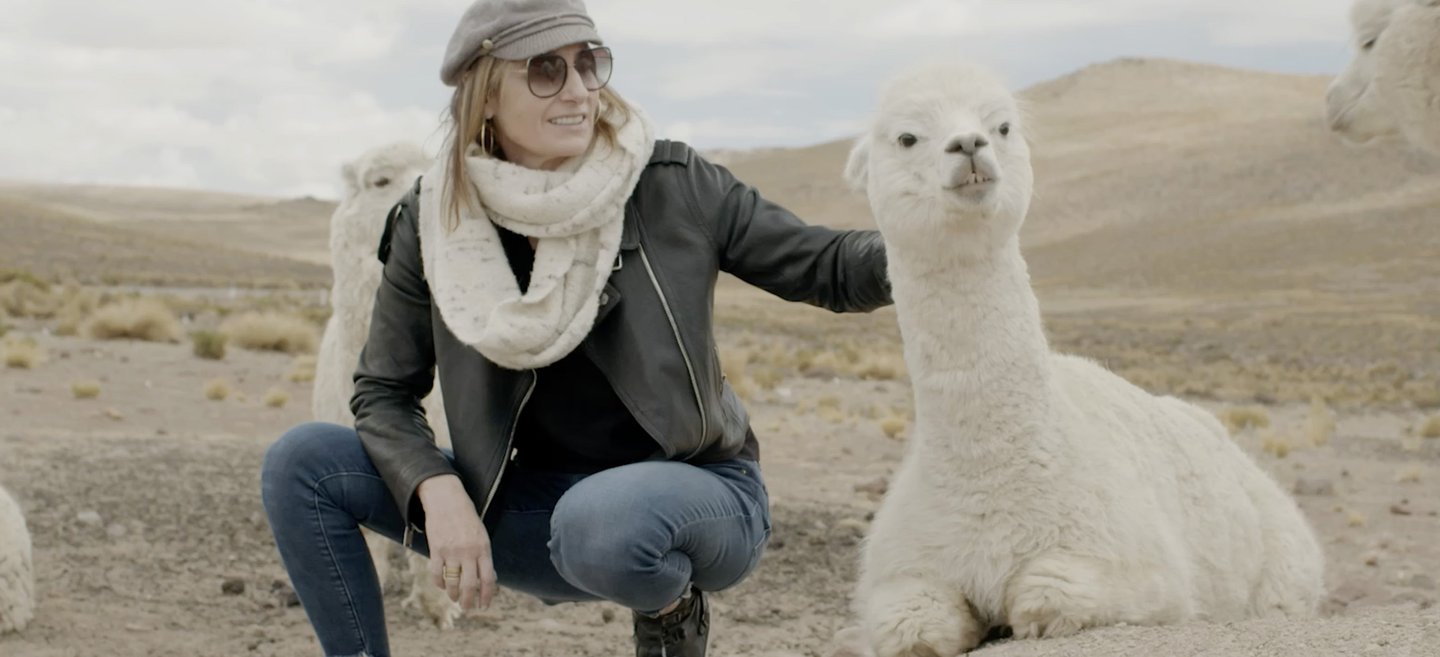
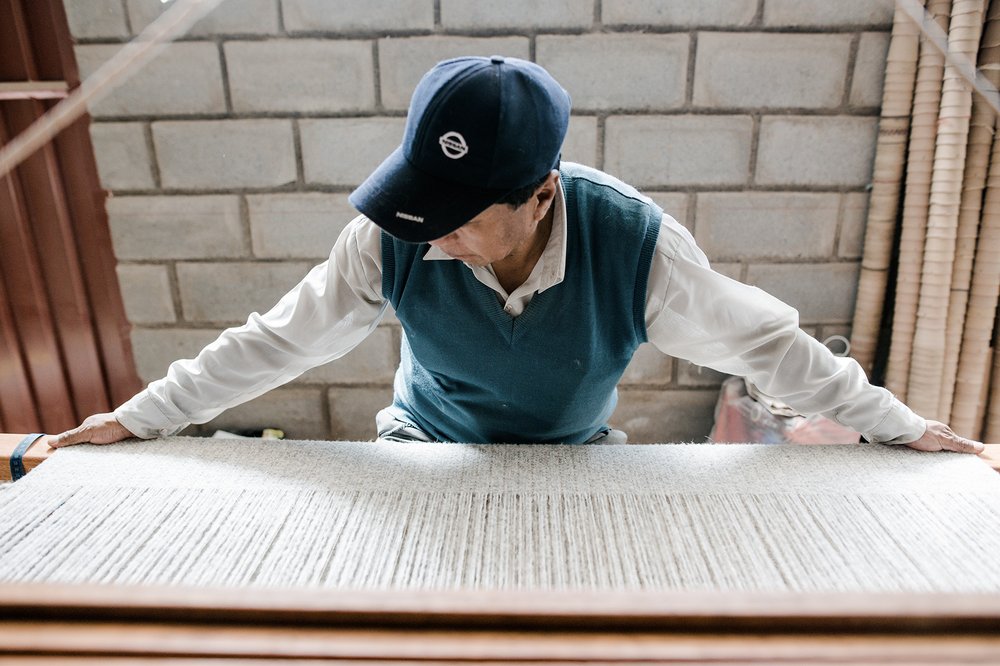


Photography: Rosemary Hallgarten, Chris Everard, Sissela Johansson


2 min read
WLLW examines Oeko-Tex Standard 100, a key certification that safeguards against toxic substances in textiles, responding to consumer demand for healthier products.

4 min read
WLLW explores de Le Cuona's healthy and sustainable textiles with palettes and textures that evoke the natural world.